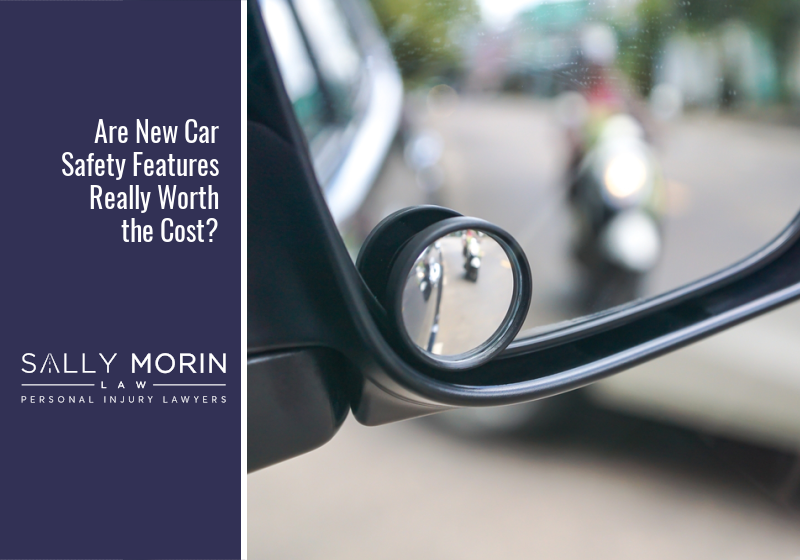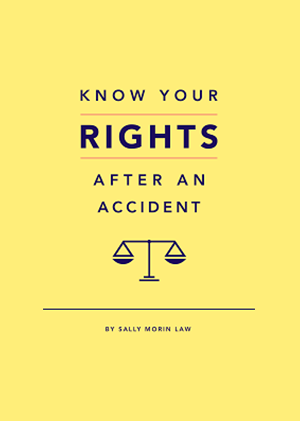Are New Car Safety Features Really Worth the Cost?
Driving a car is one of the most dangerous things we do in our daily lives. There are more than 6 million auto accidents every year in the U.S., and 90 people per day die on our nation’s roads.
That’s why new car safety features are usually welcomed with open arms. Anything we can do to improve safety has to be good, right?
Not so fast. Some safety features are lulling people into a false sense of security that can lead to severe auto accidents. Let’s take a look at whether all these new car safety features are really worth your money.
There are Dozens of New Car Safety Options
Auto manufacturers are now building innovative safety features into all of their newly-made vehicles. Pick any auto company, and they’ll be advertising a long list of safety options, features, and technologies they offer.
Some features are now standard in almost all vehicles, like airbags and seat belts. Beyond those, here’s a list of the most common and popular new safety features approved by the NHTSA, which oversees U.S. highway and auto safety.
- Adaptive lighting adjusts the vehicle’s headlights, running lights, and/or dash warning lights depending on the ambient conditions.
- Automatic braking systems (ABS), are one of the older safety features on the market at this point. They automatically engage to prevent the brakes from locking and avoid harsh impacts.
- Backup warnings tell the driver when someone or something is behind them as they move in reverse. Most commonly, they give off an audible bell sound that can be heard inside and outside the vehicle.
- Blindspot cameras/monitoring systems alert a driver to hidden dangers around the body of the vehicle. This helps with blind spots where you might not otherwise spot a person, scooter, or vehicle.
- Collision warnings use radar to monitor the distance between your car and other objects and notify a driver when a collision is imminent. Forward collision protection tries to prevent a car from encountering objects as it moves, and rear/back collision protection watches the area behind the vehicle for incoming objects.
- Cruise control, and its newer cousin adaptive cruise control, can help the car maintain a constant speed and distance from other vehicles.
- Highway pilot systems automatically brake and accelerate to assist the driver with staying in the flow of traffic during changing highway conditions.
- Lane departure/lane centering/lane assist keeps you moving straight in the lane of travel. Lane departure warnings use sound and lights to alert the driver that they are drifting and some vehicles have swerve warnings that pop up when the driver is moving back and forth in the lane too much.
- Pedestrian auto braking engages when there is a risk of collision with someone on foot.
- Traffic jam assist is a new technology that auto-brakes to keep the vehicle moving or slowing in the flow of traffic, depending on nearby traffic congestion.
- Video systems, including dash cams, monitor the car during driving and capture footage of the driving activities, which can be useful after an accident or vandalism to the vehicle.
What About Self-Driving Vehicles?
In addition to all of the features listed above, some manufacturers are now producing self-driving and autonomous vehicles that you might see on the streets of San Francisco and Los Angeles. These vehicles use some of the most innovative safety and navigational technology on the planet.
Tesla is perhaps the most famous manufacturer of self-driving vehicles. But almost every major auto manufacturer now makes some version of a self-driving car. Other big-name companies are getting in on the game too: Amazon, Apple, Bosch, Cisco, and Intel, just to name a few.
Uber has been testing “driverless” rideshare vehicles for years – which, so far, still have human drivers. Despite safety concerns and several severe crashes, driverless Ubers may become widely used in the next few years.
Most Safety Features are Worth the Money if Used Correctly
The NHTSA has done numerous studies about the value of safety technology in a wide variety of vehicles. Overall, they have found, most built-in vehicle safety features are serving their function to prevent accidents and save lives.
In fact, after 40 years of road studies, the NHTSA released a statement emphasizing the motto “newer cars are safer cars.” Simply put, the newer your car is, the more likely it is to protect you from injury and save your life.
Distracted Driving
However, there’s another aspect of road safety that’s getting worse instead of better: distracted driving. Over the past 10 years, distracted driving accidents have risen sharply. This is attributed in large part to the use of cell phones and other technology.
An in-car safety system that’s intended to prevent accidents can actually cause an accident if you tinker with it and take your eyes off the road. Autopilot technology gives drivers a false sense of security that the car will automatically avoid accidents. However, no autopilot technology is currently advanced enough to operate without human supervision.
This is especially dangerous when you factor in the behavior of pedestrians, cyclists, and scooter riders. Research has found that autopilot technology often fails to recognize the darting movements of walkers and jaywalkers, which led to a self-driving Uber striking and killing a pedestrian.
Knowing all this, evaluate your options carefully when it comes to car safety. Features like blind-spot cameras and collision detectors are probably worth having. But self-driving technology shouldn’t tempt you into becoming one of California’s biggest hazards: a bad driver.
We Handle Your Personal Injury Claim So You Can Focus on Your Life
After an injury, contact the attorneys at Sally Morin Personal Injury Lawyers. We handle many areas of the law, including car accidents. We believe you should be able to focus on recovering while we handle the legal details. We truly care about the people of California. Contact us today for a free online case evaluation.











